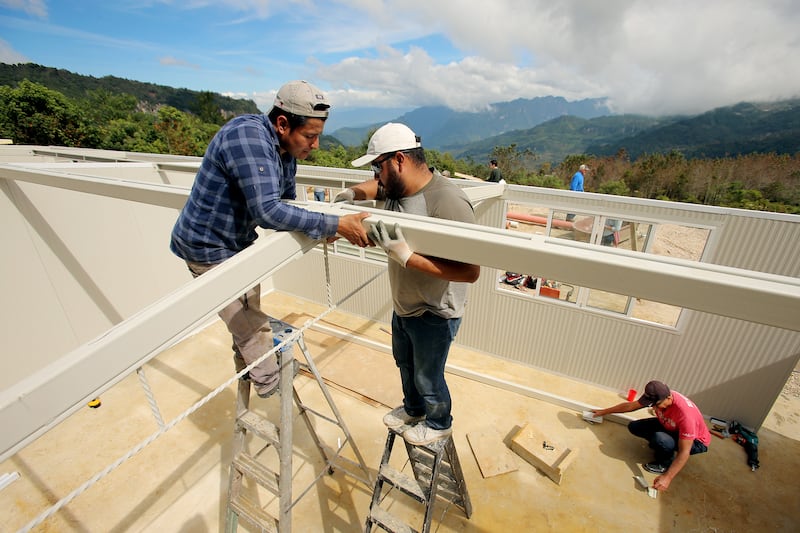SAN ANDRÉS LARRÁINZAR, Mexico — I bow my head and am met with the fragrance of fresh flowers. A middle school-age girl places a string of pink and purple petals around my neck and then rushes back to join her classmates who are arranged neatly in rows, wearing embroidered shirts with black cotton skirts.
It’s Thanksgiving day, and I am in Chiapas, the southernmost state in Mexico, where the remnants of Spanish rule and ancient Maya civilization are found interspersed between beaches, tropical jungles and forested highlands. For the next three days, I will be here in the indigenous village of Bayalehmó to report on a school-building trip with Utah-based nonprofit Escalera.
Escalera is one of many organizations, including at least six in Utah, that offer international service trips where people from the United States can experience a new culture and the feeling of doing good at the same time. I’ve come to Chiapas with seven other Americans who have forgone traditional holiday festivities in hopes of experiencing something more meaningful.
Assembled with community leaders and children in an outdoor pavilion, perched high on a forested mountainside, we wander around with our flower necklaces, trying to connect. The children giggle and speak to each other in Tzotzil, their native language. They are the students who will occupy the two new classrooms Escalera is going to build. Small and wiry, they traverse their high-altitude home with ease; some walk an hour each day to get to school. For them, weaving colorful textiles and working in the fields to grow corn and beans is a more certain future than college. Less than half will finish high school.

The only people who look truly comfortable at this welcome ceremony are Jan and Bryson Garbett, the founders of Escalera, who have been promoting education in Chiapas for more than 20 years. In that time, they have helped more than 57,000 kids with scholarships and worked to have 180 new classrooms built. Between 2007 and 2018, Escalera donated $8.1 million to help further its education programs. The Garbetts greet the village residents like grandparents meeting distant cousins and grandchildren at an extended family Thanksgiving dinner, somehow finding words within the gaping language barrier.
The rest of us, who are in Chiapas for the first or second time, are not so at ease in this environment. The U.S. trip participants have each paid $3,500 for an experience that is part vacation, part service project. About $2,000 goes toward funding the school, and the rest goes toward travel expenses, including plane tickets, food and some scheduled sightseeing. Jan Garbett says the main reasons for bringing volunteers from the United States are fundraising and cultural exchange. She hopes we will be inspired by what we see here.
But I’m skeptical because I’ve been on “voluntourism” trips like this before. Those trips to China, Thailand and Zambia felt rewarding and productive at the time, but looking back I have questioned whether I actually helped anyone by going, and whether the money spent on my airfare could have served a better purpose.
With numerous case studies demonstrating international humanitarian projects have the potential to do more harm than good, I’ve even wondered if I might have had a negative effect on the communities I sought to serve. Over the years, the Garbetts have taken steps to ensure their impact is a positive one. They have dedicated themselves to one area, working hard to understand the specific challenges in Chiapas, and they have conducted evaluations and randomized controlled trials to measure impact. The results haven’t always been what they hoped for, but they’ve made adjustments.
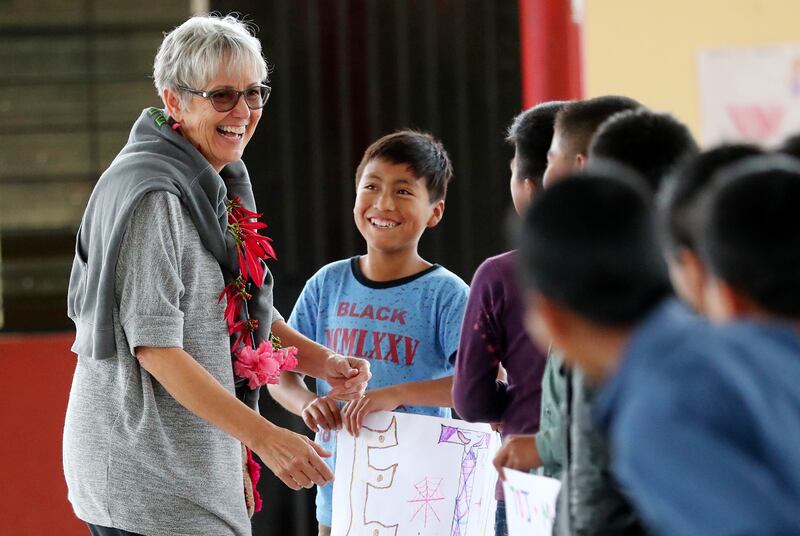
Chiapas
Often referred to as the “forgotten people,” the indigenous communities in Chiapas have a long history of exploitation, beginning with Spanish colonization in the 16th century. In the 1990s, the Zapatista movement sprung from frustration that the Mexican government was taking their money but offering nothing in return. Their fight for independence turned into a bloody conflict that killed hundreds, but it also garnered international attention and attracted foreign aid.
Today, San Cristóbal de las Casas, the cultural capital of Chiapas, is a hub for nonprofits, according to Escalera’s policy and development director, Myriam Hernandez. International organizations there do everything from building schools to promoting sustainable farming techniques, she said. Despite their best efforts, about 80% of the 5 million people in Chiapas remain in poverty. Nearly 1 in 5 cannot read. This harsh reality has caused some, including Hernandez, to question whether the concentration of charities has had any real impact.
“Are we really welcome here?” she asks. “Are we needed?”
It’s a question Jan and Bryson Garbett have asked themselves repeatedly since 1997, when they abandoned plans to go to Disneyland and took seven of their eight children on a service trip to Xalitzintla in Puebla, Mexico, instead. Like many parents, they hoped to give their children a cultural experience that would broaden their perspectives. And so, they journeyed to a town at the base of the active Iztaccihuatl volcano, where they worked on school repairs and helped with health services. The trip sparked something in them, and the one-time excursion turned into an ongoing quest to figure out what else they could do to help.
The answer was scholarships.
The Garbetts (who own Garbett Homes, a prominent homebuilding business in Utah) began networking with members of The Church of Jesus Christ of Latter-day Saints across Mexico to find students who couldn’t afford to go to high school. Their plan was to provide funding for them to attend Benemérito, a private school operated by the church in Mexico City. Dozens of students eagerly accepted the offer.
But the Garbetts kept hearing about communities beyond the cities’ borders, indigenous villages in the highlands where poverty was most extreme. Their hearts told them that’s where they needed to go next. They arranged for one of their contacts to take them to a town in the Chiapas highlands called Chojalo, and with excitement, they pitched their scholarship program to families there.
The Garbetts were stunned however, when parents asked questions like: “Do our kids need to have completed middle school?” and “Do they need to know how to speak Spanish?”
They had stumbled across a common pitfall for many well-intentioned charitable groups. Without adequately understanding the culture or conditions, the Garbetts were unprepared to help. Before high school scholarships, the town needed a middle school.
“We didn’t have any experience in the communities. We didn’t have any knowledge, so we naively did the same thing we had done everywhere else,” said Jan Garbett. “We left thinking that there wasn’t anything we had to offer that village. We didn’t plan on returning … but it haunted us.”
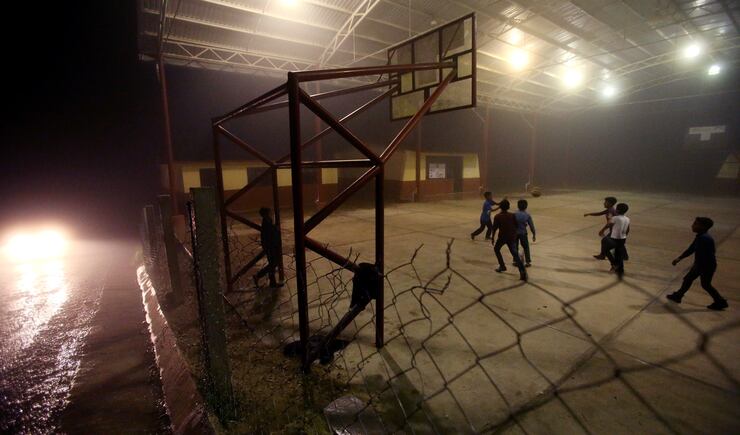



Learning lessons
In recent years, common assumptions about international humanitarian work have been dismantled by “voluntourism” critics like Pippa Biddle, whose work on the subject has been published by news outlets and featured in multiple books and documentaries. She said even well-meaning projects can have disastrous, unintended consequences. Biddle and others have criticized overseas humanitarian programs for being more focused on the self-fulfillment of volunteers than the people they’re serving, for promoting a “white savior complex,” where light-skinned people have all the power and darker-skinned people live the mercy of their generosity — and in some cases, for forcing a community to adopt solutions that make things worse.
Horror stories abound. Multiple organizations, including World Challenge, have cut ties with orphanages that have been found to exploit children by keeping conditions poor in order to attract foreign donations. In her book, “Volunteer Tourism,” Mary Mostafanezhad wrote that some communities have developed economies based on volunteer work, and it’s not uncommon for finished projects to be demolished, just to be reconstructed by the next group that comes in for a feel-good experience. Abandoned wells, nutrition centers, grinding mills, latrines and school buildings litter sub-Saharan Africa, as documented by What Went Wrong? a nonprofit journalism initiative. Some projects are never completed, some aren’t maintained, and others are not wanted in the first place.
In 2010, Escalera board member Jon Nieporte said he and his coworkers noticed people in rural parts of Mexico spent a lot of time cooking tortillas over open fires inside their homes. Because the inhalation of smoke is known to cause serious health problems, and is even linked to learning disabilities, he started a program within Escalera to give electric stoves to families. But when Nieporte returned to those villages after a period of time, he found many of the stoves stashed in corners with household items stacked on top, clearly not in use.
Escalera had failed to consider the cultural significance of cooking over a fire, and the things people like about it, including warmth. Nieporte said that effort turned out to be culturally inappropriate and ineffective, and so the electric stove program was discontinued. It was a lesson learned, he said.
“A lot of nonprofits go into areas like this, and they have their idea of what needs to happen, what needs to be the solution. We’ve had some of that too, said Nieporte. “I think what really makes us different though is that we don’t trust those instincts always. We want to test it. We want to know what works.”




A warehouse
Diego Ruiz, 40, leads us into a dark and dusty warehouse where the middle school students in Bayalehmó currently study. Flowers from the necklaces they made us litter the concrete floor. Loose wire fencing and a green tarp separate desks and chairs from old furniture and materials piled in the other half of the room. Holes of light shine through the gray metal roofing like stars in a night sky. When it rains, Ruiz says, water seeps into the room, and the sound of water pounding against metal is so loud, the students can’t hear anything.
It’s why Escalera is building two new classrooms for the village.
On government documents, Ruiz’s first name is Diego, but in Tzotzil, he goes by Yek. Dressed in a beige wool coat, brown pants and cowboy hat, he is unassuming, but he is the mastermind behind the school’s existence. For five years, he traveled back and forth to the city of San Cristóbal de las Casas trying to get government support. Authorities dismissed him and said there was another middle school in a nearby community that kids could attend. It looked close enough on a map, but in reality, some children would have to walk up to three hours every day to get there, Ruiz told them. He knew because as a child, he trekked 2 hours daily, sometimes barefoot in the rain, from his home to the school.
In 2016, the government acquiesced and sent middle school teachers to Bayalehmó. Borrowing classrooms from the elementary school and utilizing the warehouse, the village’s first middle school class graduated earlier this year with 26 students, more than half of whom were girls. A handful got married soon after, at age 15. The rest received scholarships to attend high schools in nearby cities.
Ruiz welcomes Escalera’s help and says he is not worried about the children of Bayalehmó learning Spanish and moving away for school, potentially leaving behind their hometowns and native culture. He only wants the best future for his two children, ages 10 and 12.
“It is much better for all of the children to learn Spanish to communicate with the outside world,” said Ruiz. “Only speaking Tzotzil limits access to opportunities.”






Building a school
The ridge where the school is being built in Bayalehmó overlooks an expansive valley where layers of green, blue and gray mountains ripple into the horizon. Farming plots checker even the steepest slopes. There’s plenty of time to soak in the view because we have more than enough people to complete the work. At one point, more than 25 volunteers are standing around chatting while about six wield tools and paintbrushes productively. In addition to the seven people from the United States, there are seven Mexican Escalera employees, three hired workers from Mexico City, 10 missionaries from The Church of Jesus Christ of Latter-day Saints and more than a dozen local men who have come to help with the project.
Back in 2007, the first school Escalera built in a village called El Pozo took six months to complete. The construction process was inefficient and the resulting cinder block building was dark and cold.
With a background in homebuilding, the Garbetts began looking for a better solution. Their daughter Ann Garbett, now 34, identified a company in Mexico City called Vicasa that produces prefabricated buildings. In 2008, she worked with them to develop a design for a school, which Escalera put to the test in a town called Pajalton Bajo.
Rather than sawing, hammering or laying bricks, the process of putting together a pre-fabricated building involves peeling plastic off the wall panels, placing screws and bolts in the right places and painting. Bryson Garbett calls it “the Ikea of school-building.” If the villagers build the foundation ahead of time (which Escalera requires to ensure local investment), a Vicasa prefabricated school can be completed in just three days. Initially, locals were skeptical of the model and thought it looked cheap and wouldn’t last as long as a cinderblock building. But the product is just as sturdy, has better insulation and lets in more light, said Bryson Garbett.
Not only are these buildings better quality, but they are so much easier to build that we are not really needed for the construction. Our group from the United States is able to take frequent excursions away from the construction site to see a textile factory, visit a local market and participate in a festival. We leave the hired workers to do the bulk of the labor and return to add some finishing touches, like attaching the gutters and painting the metal siding.
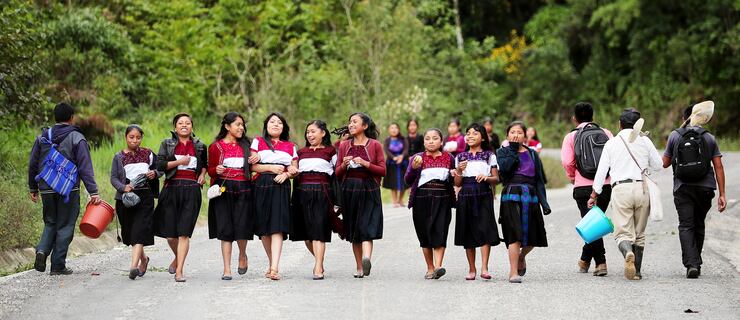






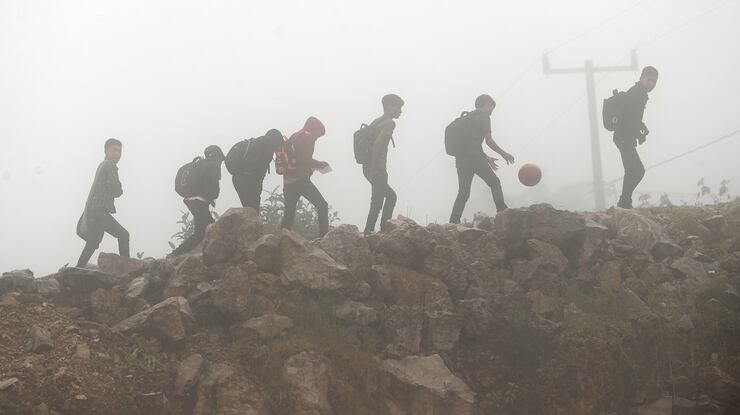

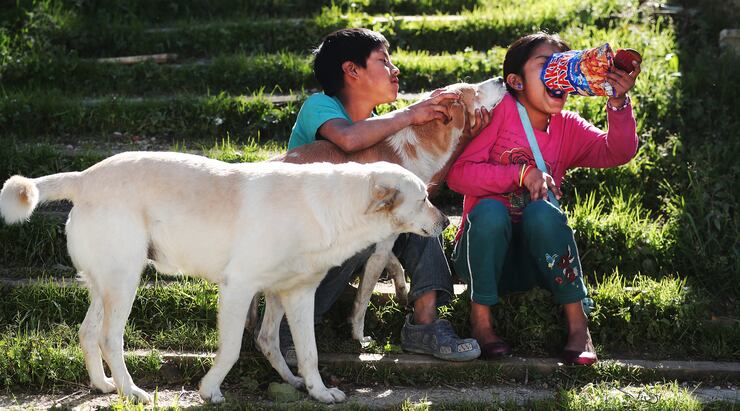
Cultural exchange
Because the school building operations are easily accomplished without outside volunteers, the main benefit of the trips, which Escalera calls “expeditions,” is cultural exchange, said Jan Garbett. Typically expeditions will involve 20-30 participants, but this year a company that signed up canceled and so the Thanksgiving trip was much smaller.
For Jan and Bryson Garbett, repeatedly visiting Chiapas has helped them get to know the area and its needs better, see what’s working or not working, and do a better job running the organization. But the cultural exchange benefit that comes from bringing larger groups of Americans along for the journey is equally invaluable, Jan Garbett said.
On an evening when the other “expeditioners” and I are gathered around a dinner table, sitting in darkness because the electricity has gone out, we begin to reflect on our experience and what we have learned from the people of Bayalehmó. The group includes a young couple from California and a grandpa and grandson duo with ties to Garbett Homes. Some in the group voice simple conclusions, “They are really just like us.” “They are so poor but so happy.” “They have strong families, and that’s what really counts in life.”
But the reality is much more nuanced. Bryson Garbett chimes in with the reality of domestic violence in communities like Bayalehmó. It’s clear that the observations we have gleaned in three days do not accurately represent the place. But they are enough to break down some racial stereotypes, make us feel more connected to the rest of the world, and build empathy. Seventeen-year-old Grant Bowen, who lives in Moses Lake, Washington, and works at Dominos, says that after struggling to communicate in Mexico, he is going to be more patient with non-English speakers who visit the store.
In addition to emotional souvenirs, we accumulate physical souvenirs. The people of Bayalehmó share their hand woven textiles with us. They let us into their homes, give us gifts of wood-carved maracas and satchels with a leather strap that still smells strongly of cowhide. We taste their food, watch them dance and listen to their language and music. But I’m hard-pressed to see what kind of cultural benefit they are getting from me, especially since we can barely communicate.
When I ask (with the help of a translator) a group of men who are helping with the school if they have learned anything about U.S. culture from us, they say simply that they are grateful for Escalera’s generosity and express how much it means to them that we would travel to visit their community.
With an eye toward finding the most efficient means of helping, Escalera has scaled back its school-building projects in recent years in favor of scholarships once again. Now, trips like this one happen just once a year.
Rather than tuition to a school in Mexico City, about 500 miles away from Chiapas, the scholarships Escalera provides now come in the form of about $45 loaded onto cash cards. Escalera gives the cards to students who take the entrance exam to go to high school, and the money can be used for anything including school fees, clothes, school supplies or food. With randomized control trials conducted over the past five years in partnership with the University of California, San Diego, and other researchers, Escalera has determined that the program is highly effective.
According to Melissa Floca, associate director for the Center for U.S.-Mexican Studies at UCSD, recent data indicates as many as 1 in 8 students who received Escalera’s scholarships would not have continued their next year of schooling without it.







A celebration
The mayor of the local municipality, Lic. Teodolfo Perez Hernandez, wears a black wool poncho that reaches his ankles, a red belt tied around his waist, and a sombrero with ribbons that cascade from the top like a rainbow fountain. He brings Bryson and Jan into a room where they are ceremoniously dressed in the traditional clothing as well. Standing face to face, they exchange words of thanks.
The mayor, with the authority and careful wording of a politician, expresses his gratitude to Escalera for the new school.
Jan Garbett says in return, “Your children are our children.” Together the Garbetts and local leaders cut a ribbon and walk into one of the newly completed classrooms, decorated with balloons and pine needles.
Escalera has done more than one thing right. They have dedicated 20 years to one area and made real progress in understanding the area’s culture and unique challenges. With an attitude of skepticism, they’ve used randomized control trials to determine which solutions are really most effective, rather than just focussing on the projects that “feel good.” And they have relied on local staff and community partnerships to carry their projects forward.
The school is bright and clean compared to the warehouse we visited earlier, and children look on eagerly through big windows.
Compared to past projects I’ve worked on, I am more confident that these kids will be better off. But not because they met me or any other people from the United States — because Diego Ruiz worked for five years to start the school, because their parents built a foundation and because with funding from Escalera, they now have a school of their own on a beautiful mountain ridge overlooking the homes and fields of Bayalehmó.
If I honestly evaluate what we have given and what we have received as a group, I think the U.S. trip participants and I have benefitted even more than the kids. The experience starts to feel less like charity and more like a trade, which is maybe how it should be.
We descend the hill again to the pavilion where more than 150 community members gather for dancing and food. Among the crowd are kids like Antonio Lopez and Jeremias Diaz, both 12. Some of their peers don white pants and red hanker-chiefs and shuffle and spin around their female counterparts who wear beaded necklaces and hold decorative fans. Diaz wants to go to college like his two older brothers who are currently studying to be an engineer and architect in other cities. When you ask Lopez, he says he is not interested in high school; he would rather stay in Bayalehmó and grow up to be a farmer like his dad. With educational opportunities, they can make that choice for themselves.

